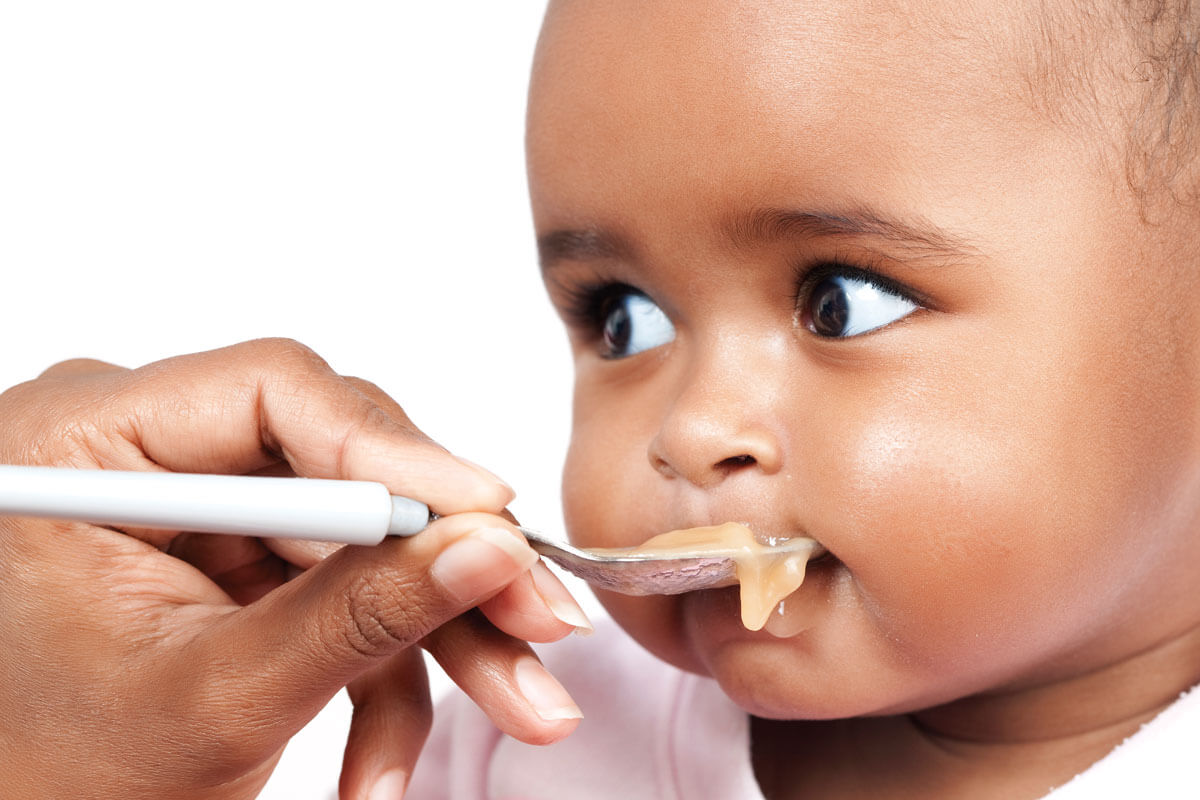Making your own baby food
- Home
- Ellyn Satter
- Older Baby / Almost Toddler
- Frequently Asked Questions
- Making your own baby food


If you cook meals for yourself, it’s simple to make the food right for your baby. If you don’t cook meals for yourself, now is the time to start. Baby foods that you buy in the store are safe, handy, and good for your baby. However, they cost a lot, and they don’t have enough lumps and pieces to teach babies to chew.
Babies generally don’t eat pureed or soft and mushy food for long. They start eating Step 1 foods at age 5 or 6 months and are ready for Step 4 foods by age 8 to 10 months. Some babies only get interested in solid food when they can finger-feed themselves Step 3 or 4 foods.
Some babies aren’t ready to start solids until months later and only join in with family meals when they are 12 to 18 months old.
When your baby is ready for vegetables and fruits, carefully mash soft or cooked food with a fork. You can use a baby food grinder.
Iron-fortified baby cereal mixed with breastmilk or formula is the best first solid food.
Have cereal be the only solid food for the first few weeks. Work up to cereal twice a day. You might get bored feeding it, but he won’t get bored eating it!
You can use a blender to puree batches of vegetables or fruit and freeze the food in ice-cube trays. Be extra careful to keep everything clean.
At first, don’t mix foods. If a new food gives your baby stomachache, diarrhea, skin rash or wheezing, you need to be able to tell what causes the problem.

© Ellyn Satter
HAND EXPRESSION
How it works
Use your hand to gently massage and compress your breast to remove milk.
What’s Involved
Average Cost
Free
Side-Lying Hold
This hold is useful when:
Cross-Cradle Hold
This hold is useful when:
Clutch or “Football” Hold
This hold is useful when:
Cradle Hold
This hold is useful when:
Laid-Back Hold
This hold is useful when: